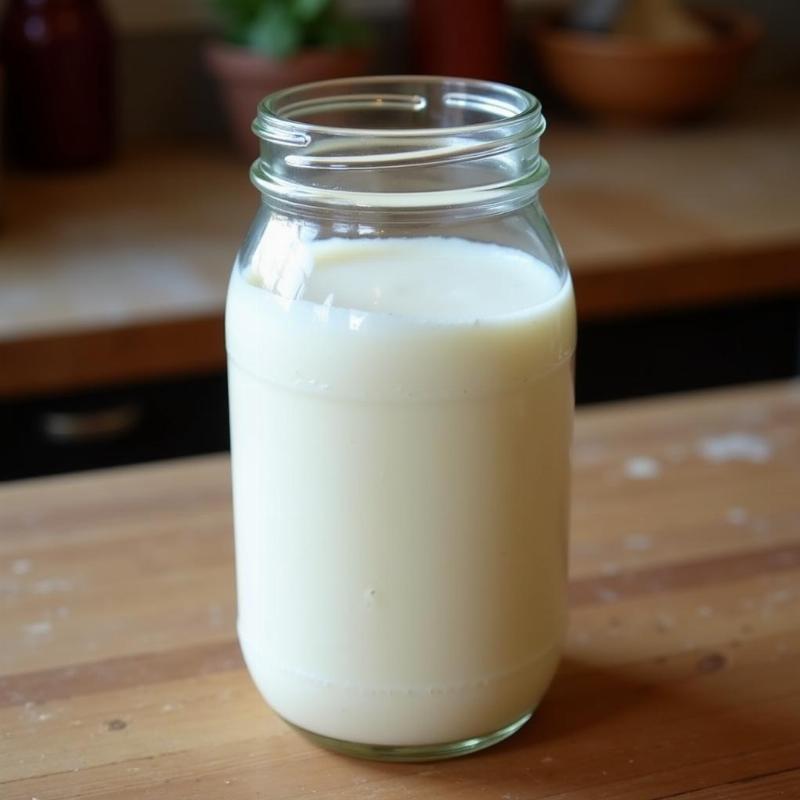Cream, the rich, fatty layer we often enjoy in our coffee or desserts, is naturally present in milk. But how does this separation occur? This article explains the science behind cream separation from milk, exploring traditional methods and modern techniques, delving into the factors influencing the process and offering insights into how to optimize cream separation for various purposes. Understanding this simple yet fascinating process can enhance your appreciation for dairy products and even help you make better choices in the kitchen.
Understanding the Science Behind Cream Separation
Milk is a complex mixture of water, fat, proteins, carbohydrates, and minerals. The fat globules, which make up the cream, are lighter than the other components in milk. This density difference is the key to cream separation. Naturally, the lighter cream rises to the top, forming a distinct layer. This process, known as gravity separation, is the most basic method of obtaining cream.
Traditional Methods of Cream Separation
For centuries, people have relied on the natural process of gravity separation to collect cream. Freshly drawn milk was simply left undisturbed in a cool place, allowing the cream to rise to the top over several hours. This traditional method, though time-consuming, produced a thick, rich cream perfect for churning into butter or adding to coffee.  Gravity Cream Separation
Gravity Cream Separation
Another traditional method is using a cream separator, a simple device designed to accelerate the separation process. This method uses centrifugal force to separate the heavier milk from the lighter cream, significantly reducing the time required compared to gravity separation.
Modern Techniques for Cream Separation
Modern dairy processing utilizes sophisticated techniques like centrifugation to separate cream from milk on a large scale. High-speed centrifuges spin the milk at incredibly high speeds, forcing the heavier milk outwards and leaving the lighter cream in the center. This method is highly efficient and allows for precise control over the fat content of the cream and the remaining milk.
Factors Affecting Cream Separation
Several factors influence the effectiveness of cream separation. Temperature plays a crucial role; warmer temperatures make the fat globules more fluid and easier to separate. The fat content of the milk itself is also a determining factor. Milk with higher fat content will naturally yield more cream. Furthermore, the size and distribution of fat globules influence the separation process. Smaller, evenly distributed globules are more difficult to separate compared to larger ones.
Optimizing Cream Separation for Different Purposes
Different culinary applications require varying cream consistencies. For whipping cream, a higher fat content is essential for achieving the desired volume and stability. For coffee, a lighter cream may be preferred. Understanding the factors affecting cream separation allows you to adjust the process to meet your specific needs. For instance, letting the milk sit for a longer period will result in a thicker cream layer.
How Cream Separation Benefits Us
Cream separation not only provides us with delicious cream for our culinary endeavors but also allows for the production of various milk products with different fat contents, catering to diverse dietary needs and preferences. Skim milk, low-fat milk, and whole milk are all products of cream separation.
Conclusion
The separation of cream from milk, a process rooted in simple scientific principles, has evolved from traditional methods to sophisticated industrial techniques. Understanding the factors influencing this process enables us to optimize cream separation for different purposes, from making butter to enjoying a perfect cup of coffee. By appreciating the science behind this seemingly simple process, we can gain a deeper understanding of the dairy products we consume daily.
FAQ
-
Why does cream rise to the top of milk? Cream is less dense than the rest of the milk, causing it to float to the top.
-
How long does it take for cream to separate naturally? It typically takes several hours for cream to separate naturally through gravity.
-
What is the difference between heavy cream and light cream? Heavy cream has a higher fat content than light cream.
-
Can I separate cream from homogenized milk? Homogenization prevents cream separation by breaking down the fat globules into smaller sizes.
-
What are some uses for separated cream? Separated cream can be used for whipping, making butter, adding to coffee, and various culinary applications.
-
How is cream separated commercially? Commercial cream separation is primarily done through high-speed centrifugation.
-
What factors influence the effectiveness of cream separation? Temperature, fat content, and the size and distribution of fat globules all play a role in cream separation.
About PlaTovi
PlaTovi is your one-stop solution for all your travel needs, specializing in crafting unforgettable travel experiences within India and internationally. From curated traditional tour packages encompassing sightseeing, dining, and shopping, to seamless hotel and resort bookings, international and domestic flight reservations, event and wedding planning, car rentals and airport transfers, and visa and documentation assistance, we’ve got you covered. For inquiries regarding our bespoke travel services, don’t hesitate to reach out to our expert team. Contact us at [email protected] or call us at +91 22-2517-3581. Let PlaTovi help you create your dream vacation!